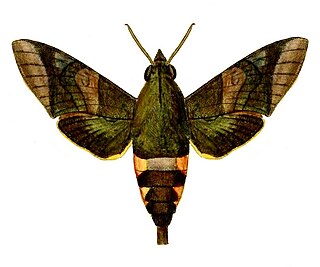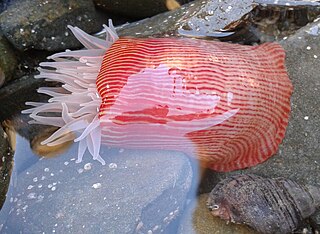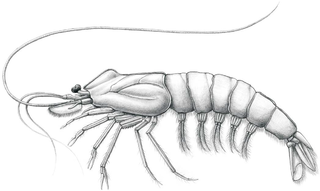 W
WAplysina archeri, also known as a stove-pipe sponge because of its shape, is a species of tube sponge that has long tube-like structures of cylindrical shape. Although they can grow in a single tube, they often grow in large groups of up to 22 tubes. A single tube can grow up to 5 feet (1.5 m) high and 3 inches (7.6 cm) thick. These sponges mostly live in the Western Atlantic Ocean: the Caribbean, The Bahamas, Florida, and Bonaire. Like most sponges, they are filter feeders; they eat food such as plankton or suspended detritus as it passes them. Very little is known about their behavioral patterns except for their feeding ecology and reproductive biology. Tubes occur in varying colors including lavender, pink, gray, and brown. They reproduce both by asexual and sexual reproduction. These sponges take hundreds of years to grow and never stop growing until they die. Snails are among their natural predators. The population density of these sponges is going down because of oil spills and other pollution.
 W
WAtemnora is a monotypic moth genus in the family Sphingidae erected by Walter Rothschild and Karl Jordan in 1903. Its only species, Atemnora westermannii, described by Jean Baptiste Boisduval in 1875, is known from wooded habitats throughout the Ethiopian Region including Madagascar, but excluding the extreme south of Africa.
 W
WCladodus is an extinct genus of cartilaginous fishes in the family Cladoselachidae. As the name implies, they are a type of cladodont, primitive sharks with teeth designed to snag fish and swallow them whole, instead of sawing off chunks to swallow.
 W
WCladodus is an extinct genus of cartilaginous fishes in the family Cladoselachidae. As the name implies, they are a type of cladodont, primitive sharks with teeth designed to snag fish and swallow them whole, instead of sawing off chunks to swallow.
 W
WCladodus is an extinct genus of cartilaginous fishes in the family Cladoselachidae. As the name implies, they are a type of cladodont, primitive sharks with teeth designed to snag fish and swallow them whole, instead of sawing off chunks to swallow.
 W
WCladodus is an extinct genus of cartilaginous fishes in the family Cladoselachidae. As the name implies, they are a type of cladodont, primitive sharks with teeth designed to snag fish and swallow them whole, instead of sawing off chunks to swallow.
 W
WCladodus is an extinct genus of cartilaginous fishes in the family Cladoselachidae. As the name implies, they are a type of cladodont, primitive sharks with teeth designed to snag fish and swallow them whole, instead of sawing off chunks to swallow.
 W
WCtenacanthus is a prehistoric cartilaginous fish genus. Remains have been found in the Bloyd Formation in Arkansas, United States and in South America.
 W
WCtenacanthus is a prehistoric cartilaginous fish genus. Remains have been found in the Bloyd Formation in Arkansas, United States and in South America.
 W
WEpiactis thompsoni, the red-striped anemone, is a species of marine invertebrate in the family Actiniidae, found in New Zealand and South Australia. They are commonly found in the rocky intertidal zone.
 W
WFascioloides magna, also known as giant liver fluke, large American liver fluke or deer fluke, is trematode parasite that occurs in wild and domestic ruminants in North America and Europe. Adult flukes occur in the liver of the definitive host and feed on blood. Mature flukes measure 4 to 10 cm in length × 2 to 3.5 cm in width, and have an oval dorso-ventrally flattened body with oral and ventral sucker. The flukes are reddish-brown in colour and are covered by tegument. As with other digenean trematodes, the life cycle includes intramolluscan phase in snails. The parasite is currently distributed in wild ruminants in North America and Europe, including Austria, Canada, the Czech Republic, Croatia, Germany, Hungary, Italy, Poland, Serbia, Slovakia, and the United States.
 W
WHolothuria mexicana, the donkey dung sea cucumber, is commonly found in the Caribbean and the Azores. It is a commercially important aspidochirote sea cucumber that can reach a total length of 50 cm (20 in).
 W
WIsostichopus fuscus, commonly known as the brown sea cucumber, is a species of sea cucumber in the family Stichopodidae native to the eastern Pacific. It was first described to science by German biologist Hubert Ludwig in 1875.
 W
WLabidodemas rugosum is a species of sea cucumber in the family Holothuriidae. It is native to the tropical Indo-Pacific region.
 W
WPalaeobenthesicymus is an extinct genus of prawns which existed in what is now Lebanon in the Late Santonian. It was described by Denis Audo and Sylvain Charbonnier in 2013, as a new genus for the species Penaeus libanensis, first described by P. Brocchi in 1875.